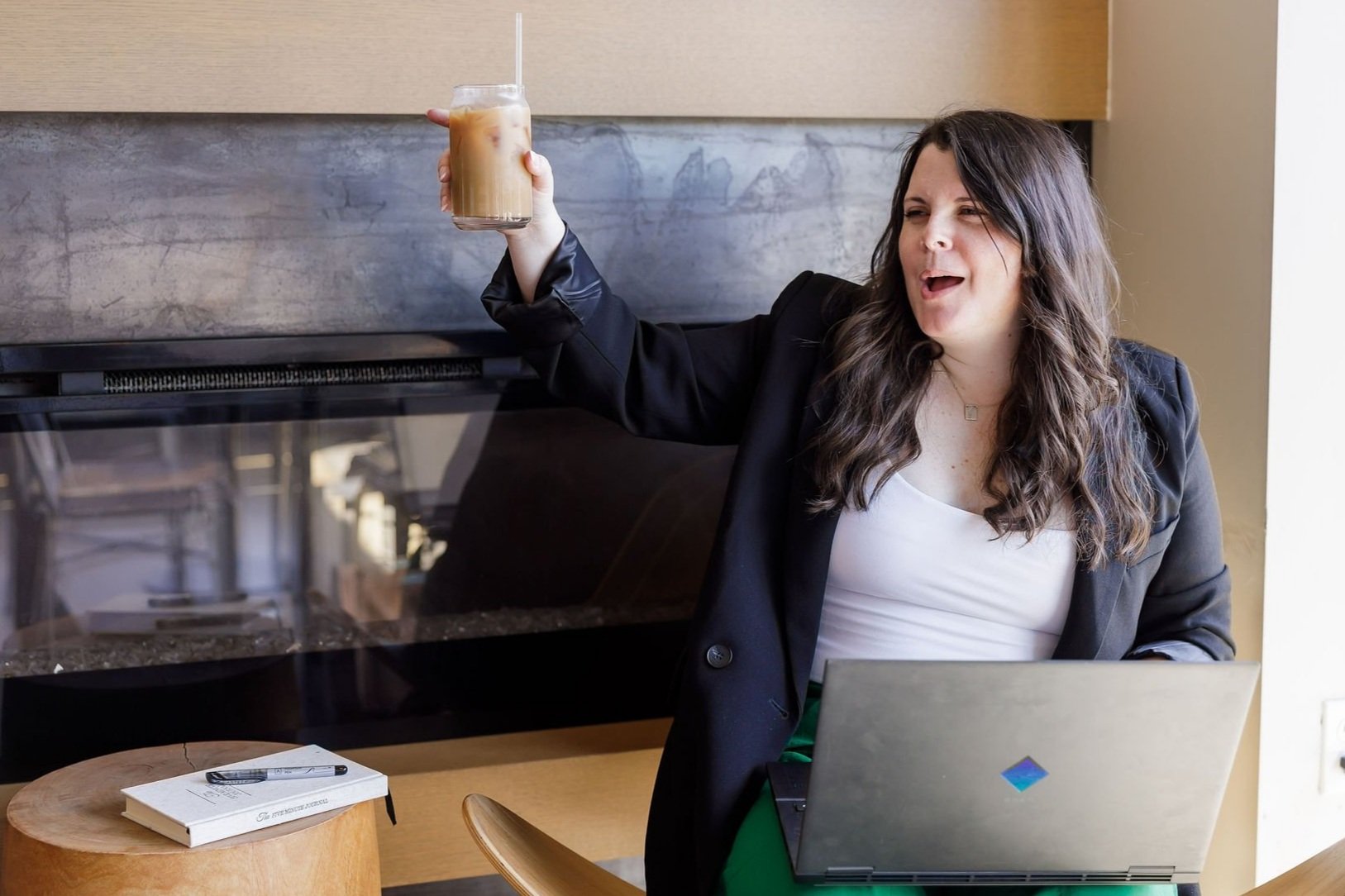How to Beat Dopamine Addiction: The Surprising Truth About Earned vs. Cheap Dopamine
Listen on Spotify / Apple Podcasts
Ever since I returned from my two-week travel adventure crisscrossing the United States (Hawaii to Pacific Northwest to New Orleans to Seattle!), I've been struggling to get back into my routines. Sound familiar?
Despite all my knowledge about burnout prevention, I felt myself falling into old patterns. Sleep routines? Shitty. Eating habits? Shitty. Hydration? You guessed it—shitty. And movement has been the worst offender of all.
As I tried to regain my footing, I stumbled across a concept that completely changed how I think about our relationship with dopamine. It wasn't about eliminating dopamine—it was about transforming where we get it from.
The Two Types of Dopamine No One Talks About
We've all heard about dopamine—that neurotransmitter responsible for our brain's reward system, motivation, and mood regulation. For years, "dopamine detoxes" have been trending as the solution to our addictive digital behaviors.
But here's what blew my mind: there aren't just "good" and "bad" levels of dopamine. There are actually two fundamentally different types of dopamine experiences:
Cheap Dopamine: The quick, easy hit that makes you feel good instantly but leads to a crash
Earned Dopamine: The slower-release, deeper satisfaction that delivers lasting rewards
This distinction completely reframes how we should approach our relationship with pleasure and reward.
Cheap Dopamine: The Fast Food of Happiness
Picture this: It's Friday night, you're exhausted after a long week, and you find yourself mindlessly scrolling through TikTok. Before you know it, three hours have passed. That's cheap dopamine in action—the easy, accessible hit that costs little effort but delivers diminishing returns.
It's the digital equivalent of pulling into a drive-thru when you're starving. You know exactly what you're getting—instant gratification that satisfies momentarily but leaves you feeling worse afterward. Some classic examples include:
Doom scrolling social media
Binge-watching Netflix
Online shopping for things outside your budget
Checking likes and notifications
Gaming for hours
I found myself falling into this trap after my vacation. Jet-lagged and tired, I'd reach for my phone instead of my running shoes. These quick dopamine hits made me feel better for about 30 seconds before the emptiness returned, leaving me craving another hit—just like that late-night fast food run that seemed like a good idea at the time.
And the worst part? When you're burned out or struggling with routines (like I was after vacation), these cheap dopamine sources become even more tempting, creating a vicious cycle that's hard to break.
Earned Dopamine: The Bougie, Italian Restaurant Alternative Your Brain Craves
Now imagine yourself at a beautiful Italian restaurant. The atmosphere is perfect, the conversation flowing, each course arrives at its own unhurried pace. That's earned dopamine—the sophisticated, slow-dining experience of pleasure that our brains actually crave.
Last weekend, I forced myself to hike despite feeling lazy. The first 20 minutes were rough, but by the time I reached the summit and looked out over the bay, I felt something I hadn't experienced in weeks: genuine satisfaction. That's earned dopamine in action.
This type of dopamine might take longer to kick in, but it hits so much harder and lasts significantly longer. It's like the difference between a candy bar and a home-cooked meal. Sources include:
Spending time in nature
Working toward meaningful goals
Creating art (like watercoloring, writing)
Quality sleep
Physical movement and exercise
New experiences and learning
Truly rejuvenating rest (not just numbing out)
These activities require more effort but deliver richer, more sustainable rewards to your nervous system. When I finally dragged myself back to my yoga studio this week, I walked out feeling like a different person—centered, calm, and genuinely satisfied in a way that no amount of Instagram scrolling could match.
Creating Your Personal Dopamine Menu
Rather than trying to eliminate dopamine (which is impossible and unhealthy), I've started using a "dopamine menu" to intentionally choose better sources of reward and pleasure.
Think of it as a restaurant menu with different categories of dopamine-boosting activities:
Appetizers (Quick Hits Under 15 Minutes)
Writing down three gratitudes
Watching short motivational clips
Quick brain dump in a notes app
Cold water splash on your face
Five minutes of breathwork
Stretching
Sides (Activities You Can Do While Working)
Playing an uplifting playlist
Using a fidget toy
Switching to a new workspace
Enjoying a sparkling water
Wearing something that makes you feel good
Lighting a candle while you work
Entrees (Bigger Activities)
Watercoloring or other creative pursuits
Taking a walk without headphones
Solo dates (bookstore, cafe, farmer's market)
Full workout session
Journaling in a beautiful environment
Desserts (Moderation Required)
Window shopping (with a timer set!)
Adding joy-bringing items to online carts
Browsing Airbnbs for dream trips
Specials (Occasional Treats)
Investing in something luxurious that enhances your work/rest
A full day unplugged following your joy
Working with a coach or therapist
Attending live events
Spa days or retreats
You Don't Beat Dopamine—You Upgrade It
Here's my radical take: we don't need to beat dopamine addiction. Dopamine is essential—it's a critical neurotransmitter that helps regulate motivation, mood, and reward.
What we need to beat is our reliance on cheap, low-quality sources of dopamine that leave us feeling worse in the long run.
The goal isn't to eliminate pleasure and reward—it's to be intentional about where we get it from. By creating your own dopamine menu, you can replace those cheap dopamine hits with earned, sustainable sources that actually support your wellbeing rather than undermine it.
My Challenge to You: High-Achiever Edition
As high achievers, we often push ourselves relentlessly without considering the quality of our rewards. We work hard, but then numb out with cheap dopamine instead of truly rejuvenating.
This week, I challenge you to create your own dopamine menu. Start noticing when you reach for those cheap dopamine hits, and consciously choose something from your menu instead.
Remember, we don't need to eliminate dopamine—we need to upgrade where we get it from. That's how we become truly burnout-proof.
Want more strategies to beat burnout and build a sustainable, fulfilling business? Check out my Burnout-Proof Business program or some of my courses here!
Ready to transform your relationship with dopamine? Share your favorite earned dopamine activities in the comments below!
Ready to make your business work for you instead of the other way around?
Check out my Burnout-Proof Business program, where you'll learn how to design systems that allow you to take strategic time off—without losing momentum.


